In conversation with Dr. Shawna Pandya
The first Canadian female commercial astronaut, a physician, an aquanaut, martial artist, and so much more…
By Makenna Kuzyk
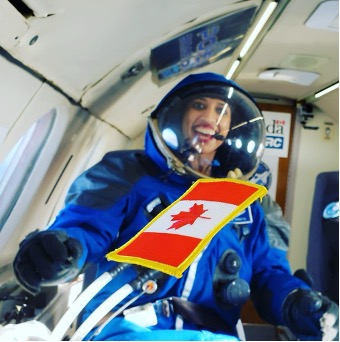
Dr. Shawna Pandya evaluates the Final Frontier Design commercial Intravehicular Activity spacesuit in a visor-down, pressurized test over the course of a research parabolic flight campaign led by the International Institute for Astronautical Sciences and the National Research Council of Canada. | Photo courtesy of Dr. Pandya.
“The only thing better than going to space is going to space with your friends, and I get to do it with an incredible team that I’ve been working with for years,” reflects Canadian physician Dr. Shawna Pandya on her upcoming mission as an astronaut on a commercial research mission with Virgin Galactic, in a conversation with The Orbiter magazine. She will be Astronaut 002 as part of the International Institute for Astronautical Sciences’s second research mission—named IIAS-02—aboard Virgin Galactic’s new class of Delta spacecraft, once they become operational as early as 2026. Their new spacecraft boasts more powerful hybrid rocket engines and the capability to fly six passengers rather than four in their mission to outer space.
The IIAS-02 team is currently amid a payload down-select to determine which experiments they will fly and optimize their mission objectives. The core objectives of their research mission will be to advance research in the biomedical and physical sciences and continue research conducted during the IIAS’s first suborbital research flight, IIAS-01.
Dr. Pandya also played a crucial role in IIAS-01, where she led the testing of a glucose monitor, marking the first time a continuous glucose monitor made it to space on a suborbital flight. This was a remarkable achievement for several reasons. Firstly, even healthy astronauts on longer orbital missions have been shown to develop pre-diabetic changes and signs of insulin resistance. Additionally, diabetes is currently a disqualifier for astronaut selection at the agency level — this means that this device could open doors for diabetic astronauts with continuous glucose monitors validated for commercial flight. Furthermore, studying normal physiology in an extreme environment can also lead to a greater understanding of diabetes here on Earth. Whether it is flying in zero gravity on a parabolic flight or doing mock EVA simulations in the IIAS neutral buoyancy laboratory, Dr. Pandya’s efforts are driven by a wish to leave a positive legacy. She expressed four clear goals, which she has pursued over the course of her career:
- Get to space.
- Make human spaceflight more accessible and democratize access to space.
- Make an impact in space medicine.
- Take the best of what has been done in space medicine to help address our greatest challenges in healthcare on Earth.
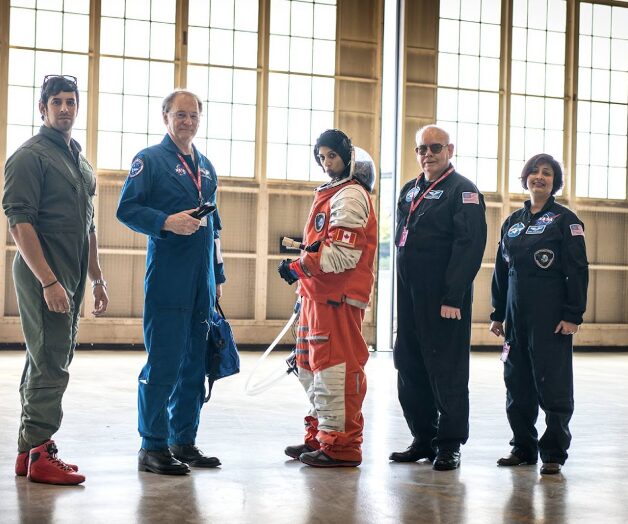
Dr. Pandya tests a first-generation Final Frontier commercial IVA spacesuit evaluation over the course of a microgravity research campaign led by the International Institute for Astronautical Sciences and the National Research Council of Canada. | Photo courtesy of Dr. Pandhya.
A theme that Dr. Pandya often returns to when talking about going to space is the idea of the “we.” Through the years, she has surrounded herself with people who share the same values of excellence and exploration, which enables the self-actualization of one’s goals. “As I started looking back at the decades I’ve spent in the space sector, I see those like-minded people who are now cap comms and astronauts,” says Dr. Pandya. “Looking at both my teammates, they are people who make me want to do better every day.”
She reflects positively on her flight crew members: Kellie Gerardi can do tasks efficiently and effectively in microseconds, and Dr. Norah Patten has a strong drive and compassion for her teammates. She also highlights the efforts of her ground and research crew: Dr. Aaron Persad’s infectious passion for space science and microgravity during payload development and Yvette Gonzalez’s ability to identify and fill gaps in their mission to ensure the success of the first IIAS suborbital flight mission.
As she makes history as being the first named Canadian commercial female astronaut, she reflects that this goal of getting to space is not without a community and legacy. “We are committed to not just being the first, but making sure we are not the last,” she says.
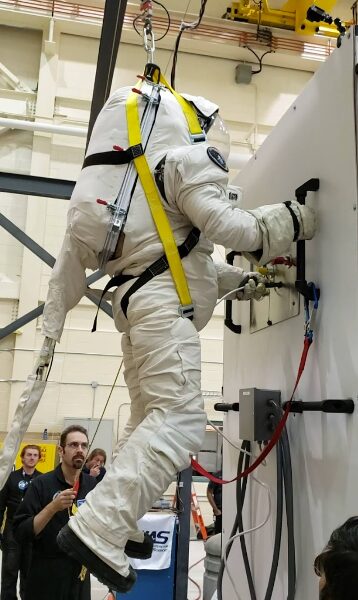
Dr. Shawna Pandya tests the Final Frontier commercial Extra-Vehicular Activity spacesuit in a gravity offset harness in a joint campaign with IIAS and the Canadian Space Agency. | Photo courtesy of Dr. Pandya.
“When I was growing up, the route to becoming an astronaut was through the government, such as through the Canadian Space Agency (CSA), ESA or NASA,” says Dr. Pandya. She then went on to complete internships sponsored by these institutions, and some of her work through IIAS and Luxsonic Technologies has been funded by the CSA and NASA — she has long been a fan of their track record for furthering human spaceflight. However, the rise of commercial space has become another exciting avenue to increase accessibility in the space industry, especially for research initiatives. Opportunities for both suborbital and orbital space flights are growing, with Virgin Galactic and Blue Origin working in the suborbital spheres, alongside SpaceX and Axiom in the orbital spheres. “This may be the golden age of increased access to space and what I hope is the beginning of the democratization of access to space,” reflects Dr. Pandya.
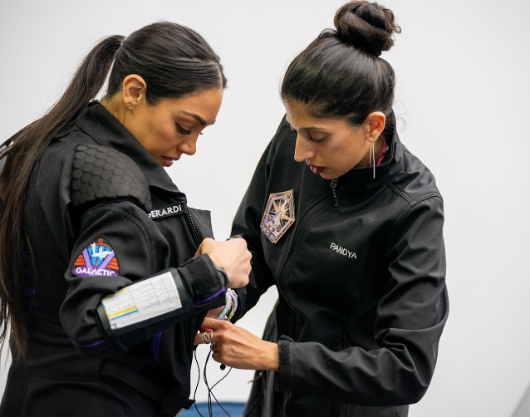
Dr. Pandya, acting as science PI and payload ground crew, assists IIAS astronaut Kellie Gerardi during Kellie’s IIAS-01 suborbital research flight. | Photo courtesy of Virign Galactic.
When it comes to making an impact on space medicine, Dr. Pandya is one of the leaders representing Canada. She was a primary investigator for one of the three payloads flown on the first IIAS mission, a continuous glucose monitor payload. She is part of the flight crew which will involve her conducting the experiment in space for IIAS. “We had a fantastic experience with the suborbital flight provider Virgin Galactic, and we have a commitment to IIAS-01 not just being a one-off flight,” says Dr. Pandya. “We view space as the next great research laboratory, and are committed to creating a sustainable pipeline of research astronauts.” She is also an aquanaut who has contributed to multi-day research missions underwater, while also participating in research missions at the Mars Desert Research Station twice, once as Crew Medical Officer, and then as a crew Commander. Her impact on space medicine can be found in various places, from serving as Director of the IIAS Space Medicine Group to her guest lectures on space medicine at the University of Alberta.
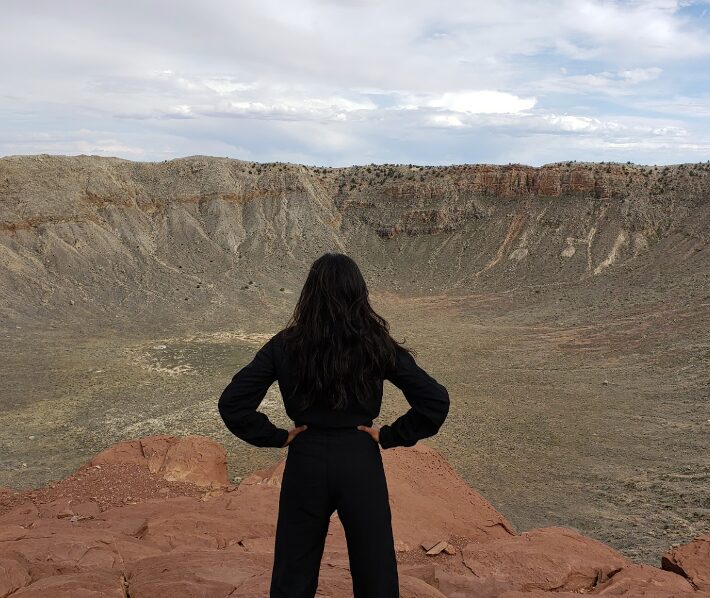
Dr. Pandya overlooks Meteor Crater during the 2019 IIAS Planetary Geology Field Course in Arizona. | Photo courtesy of Dr. Pandya.
“The first chapter I wrote as a medical student focused on space spin-off technologies that have been used in terrestrial healthcare on Earth, that is taking the best of what we have done in space to apply it to healthcare on earth,” notes Dr. Pandya. As a physician working in rural emergencies rooms all over Alberta, she has a broad view of how solutions supporting healthcare in space can benefit medicine on Earth. As Vice President of Immersive Medicine with Luxsonic Technologies, she is helping revolutionize access to diagnostic imaging, training and certification. The ability to provide healthcare across a distance can help both remote communities and astronauts in orbit. Although her schedule is incredibly packed with working hospital shifts, travelling the world to present at conferences, and exploring both sea and beyond the skies, she has found passion in her work. “I love what I do – it doesn’t feel like work,” says Dr. Pandya. She is determined to continue bridging space medicine to address medical challenges on Earth.
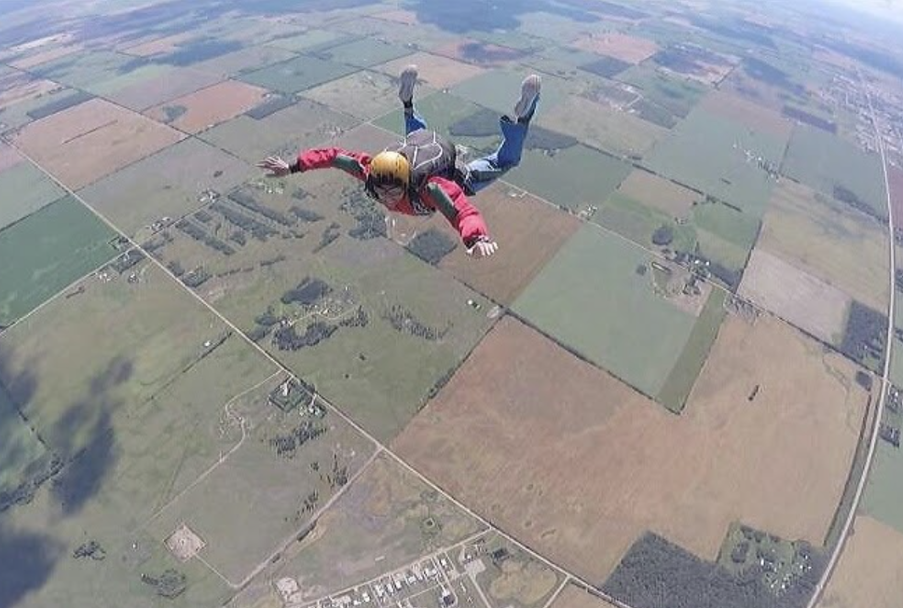
Dr. Pandya attained her Accelerated Free Fall solo skydiving licence in Alberta in 2016.
Dr. Pandya is an outstanding role model when it comes to defining your goals and making them happen. She notes that it is important to figure out what you want to do. Whether it is as an engineer, project manager, physician, or researcher, she advises readers to figure out what you want to do, and then look for conferences, gatherings, and opportunities related to that to start meeting likeminded peers and finding new avenues to pursue.
“When I was a baby medical student, I was involved in SEDS with the 2008 reboot at the national level,” says Dr. Pandya, as she mentions how it is important to get involved and stay involved with space communities. She also mentions applying for opportunities such as the CSA-funded NASA Aerospace Medicine Elective as a student, and currently serving as a mentor to the Zenith Pathways Fellowship, also underscoring the importance of surrounding yourself with good people who lift you up.
Additionally, big goals take big preparation. Dr. Pandya notes how calm her aquanaut missions and 0G flights have been — despite the complexities of working in these environments — due to the immense planning and rehearsals that go into it. “All of the work comes beforehand in preparing the payload, briefing the mission and having a clear vision, going through the motions,” she says. “When you finally fly the mission you have rehearsed your manoeuvres, and know your contingencies.” And finally, she notes that it is crucial to maintain situational awareness. “When piloting a plane, you have to constantly scan your instrument panel, map, and the world around you to know where you started, where you are, and where you are going,” she says. “You don’t need to be a pilot to gain that understanding, as it also goes for driving a car and checking your speed, outside, and the rearview mirror. I use that concept for making goals, whether short-term to long-term.”
You may be pulled in multiple directions from your job, to your schooling, and to your activities, reflects Dr. Pandya. To stay focused, she advises readers to keep an eye on the bigger picture of achieving their goals when meeting their commitments week by week. As shown by Dr. Pandya’s outstanding record in medicine and spaceflight explored in this conversation, the elements of ambition, a supportive community, a clear mission, and hard work will let you reach the stars.
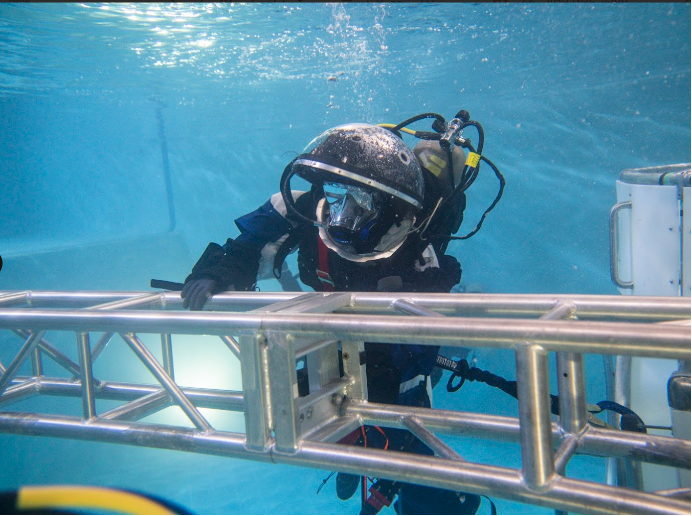
Dr. Pandya attained her Accelerated Free Fall solo skydiving licence in Alberta in 2016.
About the author:
Makenna is completing her Masters in Flight Test Engineer at the International Test Pilot School. Her passions lie in advancing the microgravity platform in Canada, a dream which was sparked when her student team, Mission SpaceWalker, flew their electroadhesive robotics experiment as part of CAN-RGX. She was part of the inaugural class of the Zenith Fellowship working at Rocket Lab in Toronto, and part of the 2024 Brooke Owens Fellowship where she worked at Zipline in San Francisco. She enjoys flying as a private pilot, Brazilian jiu jitsu, and writing music under the artist name Mak <3.
